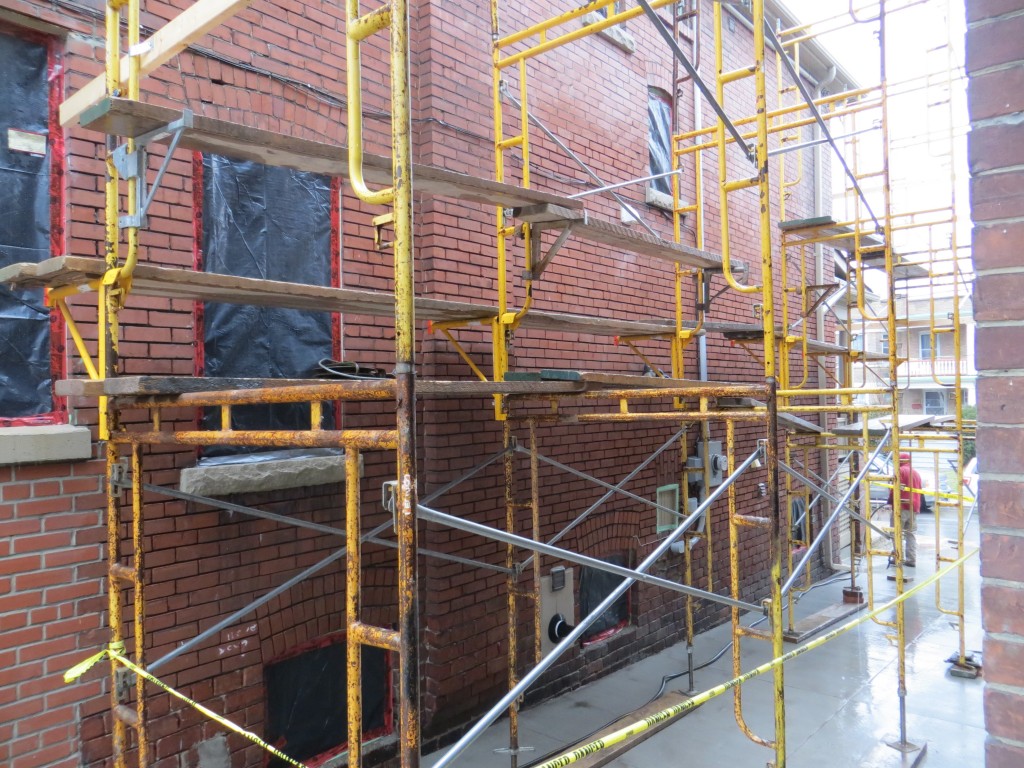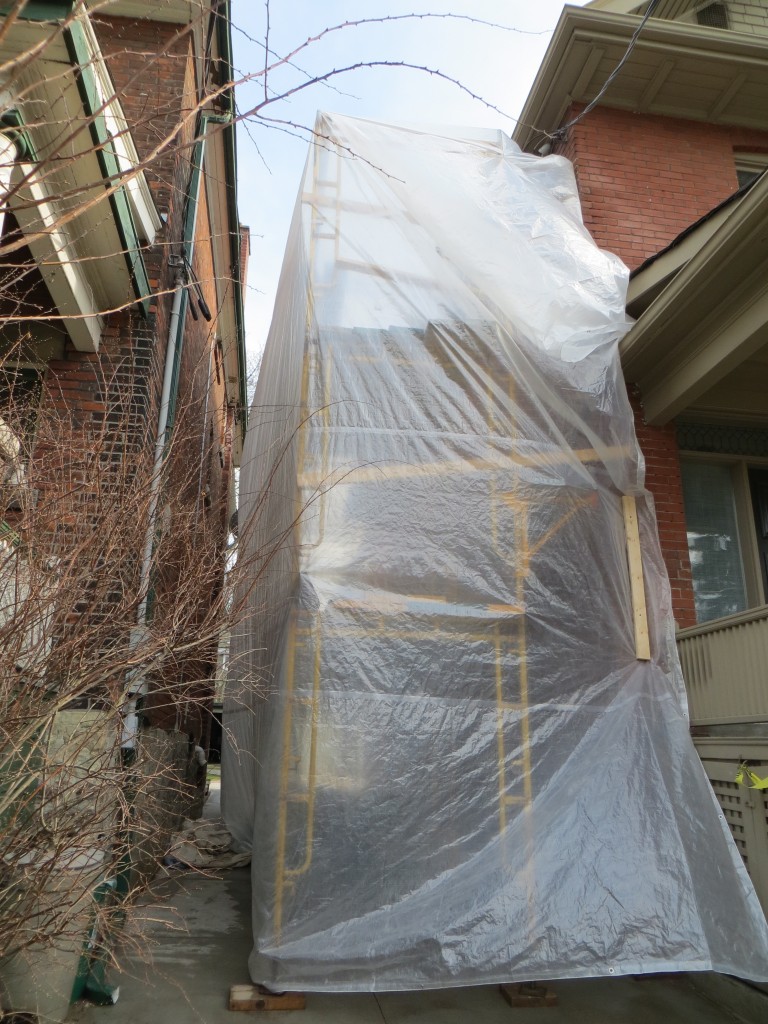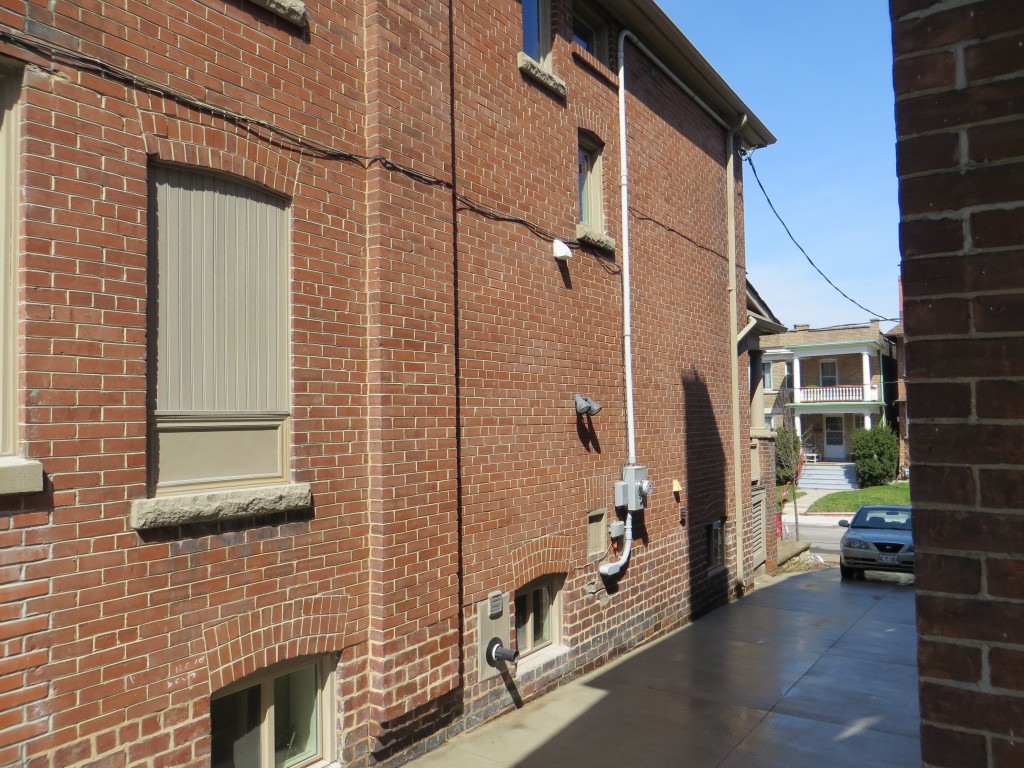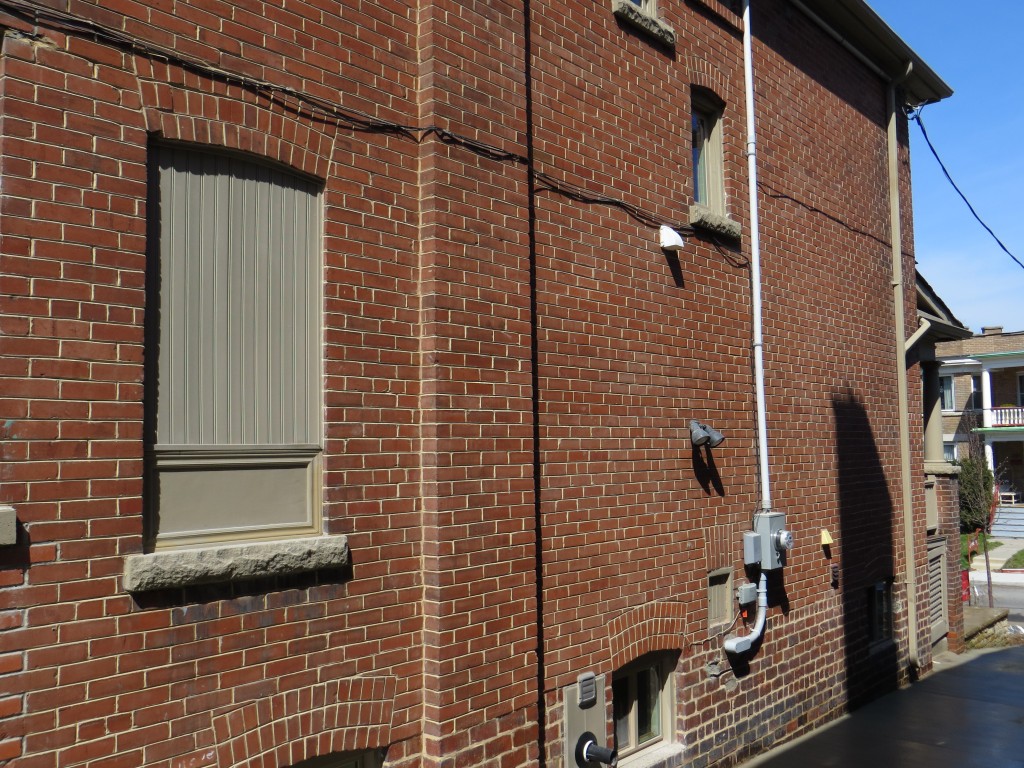This week’s project was a mortar restoration job in the High Park area. Johnson Playfair was contracted to completley remove and replace the damaged and deteriorated mortar on the side of a home. Our first task was to analyze the existing mortar, determining what it is made of and how it was originally “tooled” (tooling is the process of shaping the mortar into its final appearance after the bricks have been laid). After determining that the mortar had a 2:1 sand to Lime ratio, and that it was originally finished with a “v” joint, we began the removal of the mortar from between the bricks.
After we had all the mortar joints cut out and cleaned, we were faced with the challenge of working with lime mortar in cold temperatures. One of the main benefits to working with cement based mortars is their quick initial “set”. Lime mortars, however, take approximately 30 days to reach their initial “set” and a further 100 years to cure fully. For the first 30 days our mortar had to be kept warm and dry. With nightime temperatures dropping to -3 degrees we used propane heaters to maintain an ambiant temperature of at least +5 degrees. Ensuring a proper intial set for the lime is absolutely necessary for the health of the mortar.
The finished project looked great, it was a beautiful reproduction of a style of masonry from the early 1900’s that helped to define the aesthetic of many of Toronto’s neighbourhoods. Aside from the appeal of its appearance, the homeowners can rest assured that this wall is now healthy and fully restored with the same techniques and materials that were used when it was built.




